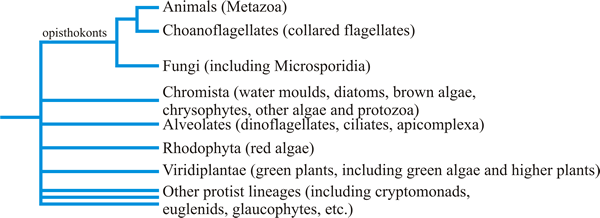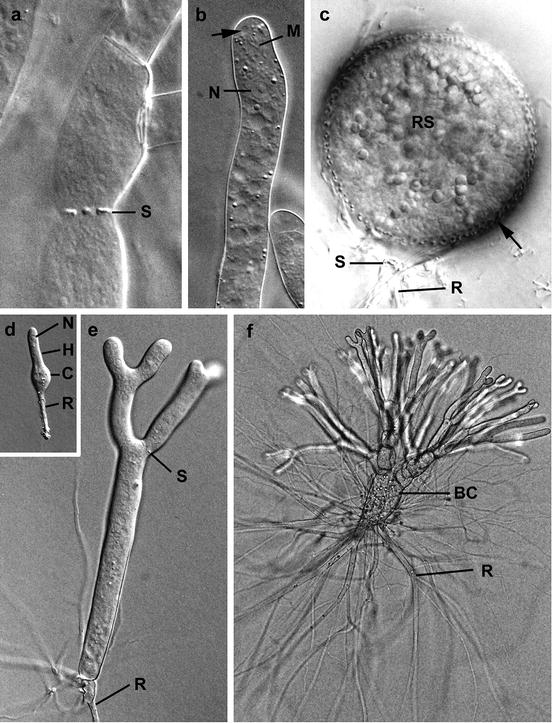Fungi – Evolution and Classification Study Guide
Introduction:
- For a long time, taxonomists have considered fungi to belong to the plant kingdom because of their many similarities with plants.
- Similar to plants, fungi are immobile, grow in soil, have a cell wall, and some (such as lichens) even look like plants.
- However, the origin of fungi has no real connection with plants as they developed parallel to them.
History of Fungi
When did fungi evolve?
The estimates range from 600 million to about a billion years ago. It is thought that the earliest fungi might have lived in water as single-celled organisms, and they would have thrived on dead and decaying material like most still do today. From the DNA evidence, it can be said that all fungi had a single common ancestor that was aquatic and even had a flagellum.
When did Fungi first appear?
- It is thought that the first colonization of land by fungi occurred around 460 million years ago.
- Some of the earliest fossils known date back to 400 million years
- A more abundant fossil record that dates back to 250 million years even show that fungi have been all around the planet, and from time to time, they may have been the dominant life forms as well.
Fungi Evolution
The Kingdom Plantae, Kingdom Animalia and Kingdom Fungi have been classified as 3 distinct multicellular eukaryotic organisms.
The major difference between the three has to do with their mode of nutrition. Molecular analysis indicates that the three kingdoms diverged from one another close to a billion years ago.
So what is the evolutionary ancestor to the fungi?
- Since they are a monophyletic group, every modern-day fungus evolved from a single ancestor that diverged from animals 800 to 900 million years ago!
Classification of Fungi
There have been plenty of revisions in the classification of fungi with an improved understanding of the organisms. Fungi phylogeny comprises seven phyla:
1. Blastocladiomycota:
- Also called Blastocladiomycetes, these types of fungi are parasitic to all eukaryotic organisms.
- The characteristic feature of this phylum is that they undergo meiosis in the spores, which is different from Chytrids, their close relatives that undergo meiosis of zygotes.
- Examples include Physoderma maydis that affects maize and causes brown spot disease Urophlyctis that parasitize alfalfa
2. Neocallimastigomycota:
- Also commonly called Neocallimastigomycota, these fungi are found in the digestive systems of bigger herbivore mammals.
- They lack mitochondria that produce energy and instead have hydrogenosomes – organelles that produce ATP.
- The neocallimastigomycetes reproduce using zoospores similar to their chytrids cousins with single or multiple flagella.
3. Glomeromycota:
- These are fungi that form a symbiotic association with the roots of higher plants (mycorrhizae).
- Except for one species that form zygospores, the rest reproduce asexually.
- It is estimated that the symbiotic association these organisms have had with plants dates back to 400 million years.
4. Zygomycota:
- These fungi can reproduce sexually using the zygospores and asexually using sporangiospores.
- The members of this phylum are usually the ones that spoil food items and cause disease.
- Some examples include the black bread mold and mucor.
5. Basidiomycota:
- These are some commonly known with a distinct structure. Also called club fungi, they reproduce by producing basidiospores which look like club stalks.
- Some well-known fungus in this phylum includes mushrooms and well-known plant pathogens such as rust and smut fungi.
6. Ascomycota:
- Also known as sac fungi, they have meiotic spores enclosed in sac-like structures.
- This phylum includes some more known mushrooms such as yeast and truffles.
7. Chytridiomycota:
- Some of the most ancient types of fungi called chytrids are found everywhere.
- They reproduce using zoospores and move through an aqueous medium using their flagellum.
- Because of the presence of a flagellum, they were also once classified as protists.
Conclusion:
- Their earliest ancestor diverged from plants and animals about a billion years ago.
- The phylogeny of fungi is based on their reproduction method and contains seven main phyla.
- The Chytridiomycota are some of the oldest known fungi. Since they have a flagellum, they were once considered members of protozoans.
- The earliest classification of fungi was based on their similarities with plants. Since they do not move and have cell walls, they were related to plants.
FAQs:
1. What are the classification of fungi?
There are seven types based on the fungi cladogram:
- Chytridiomycota
- Blastocladiomycota
- Neocallimastigomycota
- Microsporidia
- Glomeromycota
- Ascomycota
- Basidiomycota
2. What were fungi originally classified as?
Fungi were initially classified as plants because of the many similarities. However, studies since have identified distinct biochemical, morphological and genetic features in fungi that separates them from plants.
3. What is the basis of the classification of fungi explained?
Since the beginning, the fungi taxonomy has changed as classification moved from physical features to the fungi phylogeny based on DNA comparisons. Their sexual reproductive structures have been classified into major divisions for practical purposes.
4. What are the main groups of fungi?
There are 4 main well-understood groups:
- Zygomycota
- Ascomycota
- Basidiomycota
- Chytridiomycota
We hope you enjoyed studying this lesson and learned something cool about Fungi – Evolution and Classification! Join our Discord community to get any questions you may have answered and to engage with other students just like you! Don’t forget to download our App to experience our fun, VR classrooms – we promise, it makes studying much more fun!😎
Sources:
- Fungi Classification https://www.ck12.org/book/ck-12-biology-concepts/section/8.12/ Accessed on 8 Dec 2021
- Classification of Fungi https://www.ck12.org/book/ck-12-biology-advanced-concepts/section/12.24/ Accessed on 8 Dec 2021
- Outline of the classification of fungi https://www.britannica.com/science/fungus/Outline-of-classification-of-fungi Accessed on 8 Dec 2021
- Fungi Classification https://k12.libretexts.org/Bookshelves/Science_and_Technology/Biology/8%3A_Protists_and_Fungi/8.12%3A_Fungi_Classification Accessed on 8 Dec 2021
- Classification of Fungi https://courses.lumenlearning.com/biology2xmaster/chapter/classification-of-fungi/ Accessed on 8 Dec 2021
- Fungi Evolution https://flexbooks.ck12.org/cbook/ck-12-biology-flexbook-2.0/section/8.11/primary/lesson/fungi-evolution-bio/ Accessed on 8 Dec 2021



